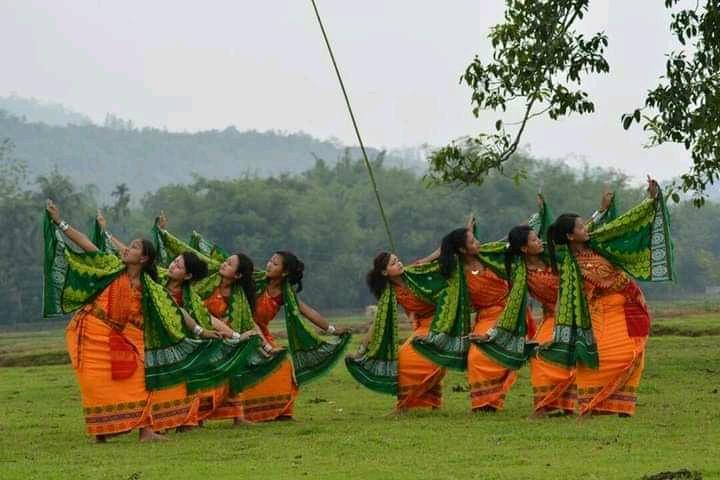Following Assam’s entry into the Guinness Book of World Records a few days ago, the state’s Bodo community is now preparing to perform its traditional Bagurumba dance in front of a large audience in an effort to break the previous record by more than 20,000 performers.
Kusum Swargiary, advisor to the All Bodo Students Union (ABSU), told reporters, “You all know that after the successful biggest Bihu dance performance at a single venue in Guwahati on April 14, carving its name on a global stage, the government is now mulling over bringing forth the Bodo community’s folk dance Bagarumba dance on the global platform with the aim of a Guinness World Record.”
Additionally, Bodoland Territorial Region Chief Pramod Boro has made preparations to draw attention to the Bagurumba dance and establish it as a well-known dance style.
The massive dance event, which is anticipated to take place next year, is already being prepared for by the Bodo Sahitya Sabha and other Bodo organisations.
Himanta Biswa Sarma, the chief minister of Assam, has also declared the government’s plan to promote the folk dance of the Bodo people on a global scale.
About Bagurumba Dance –
Bagurumba, also known as the “Butterfly Dance,” is a traditional folk dance of the Bodo tribe, an indigenous community native to the northeastern Indian state of Assam. This vibrant and rhythmic dance form is an integral part of Bodo culture, reflecting the tribe’s close relationship with nature and their rich heritage. Performed mainly by women, Bagurumba showcases their grace and agility as they mimic the movements of butterflies, swaying and fluttering their arms and bodies to the accompaniment of traditional instruments.
The dance is typically performed during Bwisagu, a major harvest festival celebrated by the Bodo people in the month of April. Bwisagu marks the beginning of the new year according to the Bodo calendar and signifies the arrival of spring, a season of renewal and rejuvenation. The festival is an occasion for the community to come together, expressing their gratitude for a bountiful harvest and seeking blessings for a prosperous year ahead. Bagurumba serves as a means to entertain and strengthen communal bonds, enabling the Bodo people to preserve their cultural identity.
The mesmerizing dance movements of Bagurumba are accompanied by a unique blend of traditional Bodo musical instruments. The most notable among them is the serja, a fiddle-like stringed instrument that produces a captivating melody. Other instruments include the tharkha, a bamboo percussion instrument, and the kham or muri, a large drum that provides the dance’s pulsating rhythm. The combination of these instruments creates a lively and enchanting atmosphere that captivates audiences and performers alike.
Bagurumba has evolved over time, with new elements and choreography being incorporated into the traditional framework, making it a living and dynamic art form. Today, this dance has gained recognition beyond the Bodo community, with performances at various cultural events and festivals across India. As a result, Bagurumba has become an ambassador for the rich cultural heritage of the Bodo people, generating interest and fostering understanding of their traditions, values, and way of life.
